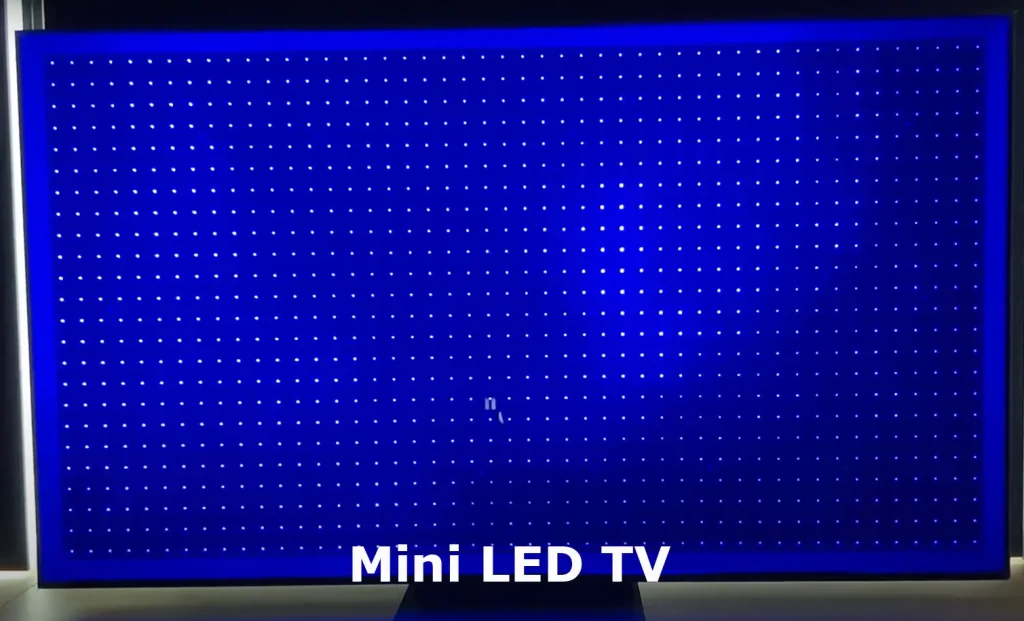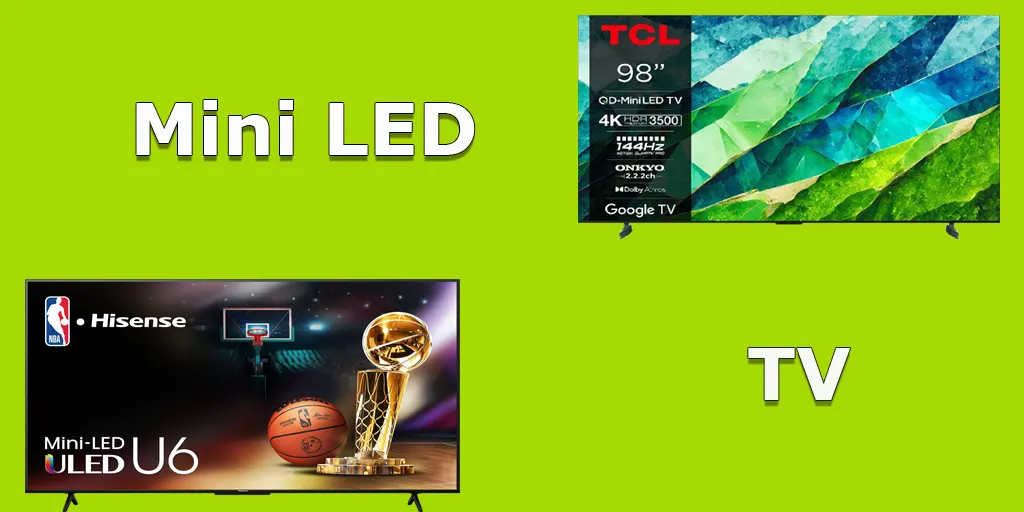Mini-LED TVs represent an advancement in LED technology, using much smaller LEDs for direct backlighting. These tiny LEDs are placed on the back of the screen to provide backlighting, marking the fifth generation of LED display backlighting improvements.
Generations of LED Display Backlights:
- Generation 1: Late 1990s to early 2000s. Backlighting was done using special lamps, such as electroluminescent lamps (hot or cold cathode).
- Generation 2: LED edge backlighting. This method used LED light strips installed along the edges of the display.
- Generation 3: Direct backlighting. LEDs were used for backlighting, with lenses placed on the LEDs to disperse the light flux.
- Generation 4: Direct backlighting with two types of LEDs, white and blue, to create a more contrasty image.
- 5th Generation – Mini-LED: Backlighting across the entire screen with small LEDs.

Advantages of Mini LED: Comparing Mini LED, LED, and OLED Displays
To be honest, there aren’t any standout advantages. Most people won’t notice the difference between traditional LED displays and the much-publicized Mini LED technology, especially in more affordable models. In high-end displays that use quantum dot technology, any noticeable difference appears primarily in dark scenes where local dimming is active. In such cases, a Mini LED display may show deeper blacks. However, this only happens in dark scenes, and a significant downside of local dimming with Mini LED is the halo effect around bright images.
It is generally believed that Mini LED TVs are better than standard LED TVs, although there isn’t substantial evidence to support this. In my opinion, if you watch TV in a well-lit room, you won’t see any difference in picture quality. In a dark room, Mini LED might look slightly better, but not by much.
When it comes to OLED versus LED, OLED clearly stands out despite some disadvantages, such as burn-in and higher cost. OLED displays offer true black colors and do not suffer from halo effects. Moreover, the latest OLED TVs, like LG’s Evo series and those from Samsung QD-OLED, have brightness levels comparable to LED TVs.
Сomparison table of OLED and Mini-LED technologies
| Criterion | OLED | Mini-LED |
|---|---|---|
| Black Levels | Provides true black by turning off individual pixels. | Deep blacks, but possible halo effect due to nearby LEDs. |
| Brightness | Generally less bright, up to 1000 nits (QD-OLED and OLED evo panels can achieve higher brightness). | Higher brightness, often 1500–2000 nits or more. |
| Contrast | Infinite contrast due to true black. | High contrast, but less than OLED because of the halo effect. |
| Color Accuracy | Wider color gamut, especially in premium models. | Good color accuracy, depending on the color filters used. |
| Viewing Angles | Very wide viewing angles, color does not distort when viewed from the side. | Comparable to OLED with IPS technology; generally worse than OLED with VA technology. |
| Burn-in | Potential burn-in issues with prolonged display of static images. | Not susceptible to burn-in compared to OLED. |
| Sizes | Sizes are limited to standard options: 42, 48, 55, 65, 77, 83 inches. | Wide range of sizes available, many manufacturers. |
| Cost | More expensive due to technology. | Typically cheaper, especially for larger sizes. |
| Energy Consumption | Energy-efficient as each pixel lights individually. | May consume more power due to the use of many LEDs. |
| Applications | Ideal for movies, gaming, and scenarios where black levels and color accuracy are important. | Great for bright rooms, multimedia use, and large screens at an affordable price. |
Summary of Mini LED TVs
Despite the intense advertising campaigns that kicked off in 2021 when factories began producing Mini LED displays and Mini LED TVs hit the market, the hype around these products has diminished by 2024. Leading TV manufacturers like Samsung and LG continue to offer Mini LED TVs but categorize them based on their display quality (such as standard LED or QLED). In contrast, Chinese brands like TCL and Hisense classify Mini LED TVs as premium products.
This difference is partly because Hisense and TCL, now major players in the LED TV display market after acquiring factories from LG and Samsung, lack OLED production technologies. As a result, they emphasize the Mini LED feature, promoting it as a premium offering. This strategy is common in advertising when a company highlights a specific feature of its product while downplaying that competitors offer similar products.






